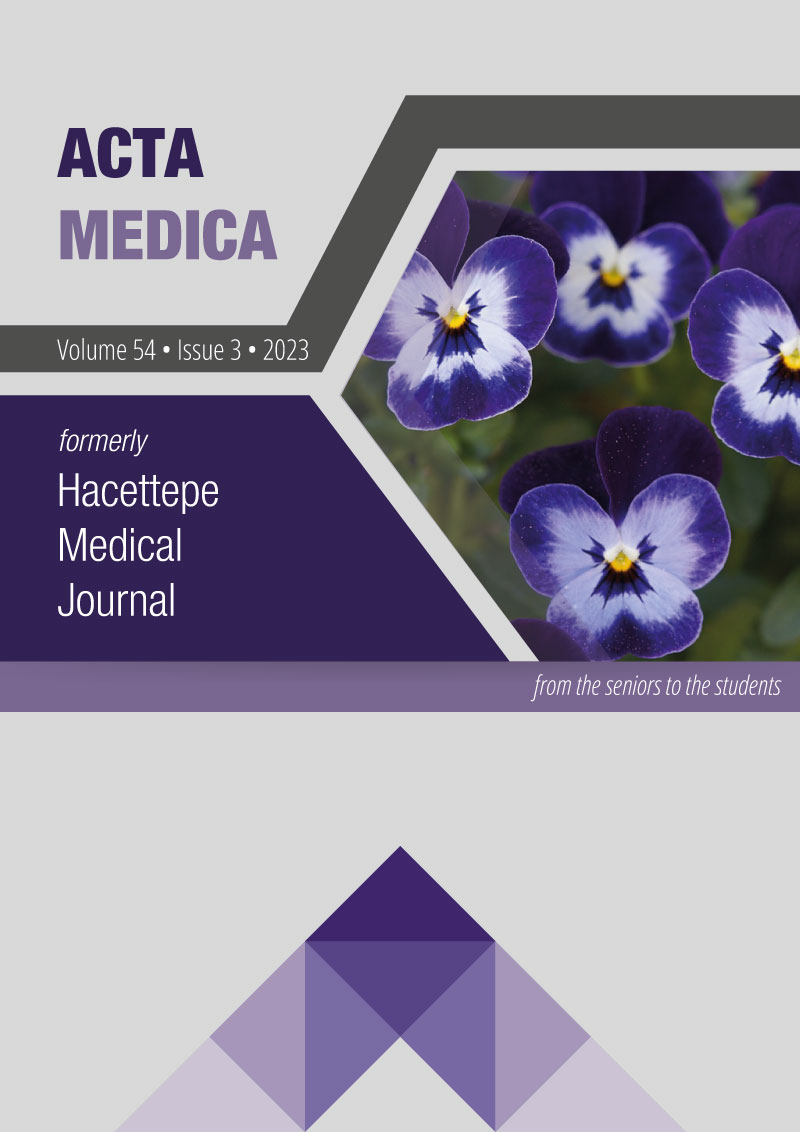Evaluation of small airway dysfunction in patients with pneumoconiosis, a cross-sectional study
DOI:
https://doi.org/10.32552/2023.ActaMedica.928Keywords:
Pneumoconiosis, small airway dysfunction, progressive massive fibrosisAbstract
Objective: Pneumoconiosis is an irreversible, progressive parenchymal lung disease caused by inhalation of mineral dust. Inhaled particles in the working environment can cause inflammation and fibrosis in the lung, affecting all respiratory tracts, including the large and small airways. Our study aimed to evaluate the frequency and risk factors of small airway dysfunction (SAD) in patients diagnosed with pneumoconiosis.
Methods: The study population consisted of 331 patients diagnosed with pneumoconiosis between 01/01/2018 and 31/05/2023. Pneumoconiosis was diagnosed with a history of occupational inorganic dust exposure, radiologic findings compatible with pneumoconiosis, and exclusion of other diagnoses. Two readers evaluated the chest radiographs of the patients according to the International Classification of Pneumoconiosis Radiographs of the International Labor Organization. SAD was defined as at least two FEF50, FEF75, and FEF25-75 measurements below 65% of their predicted values.
Results: SAD was found in 47.7% of the patients. There was a statistically significant difference between age and the prevalence of SAD, but there was no statistically significant difference between smoking status and the prevalence of SAD. It was observed that 41.9% of the patients with pneumoconiosis who had never smoked had SAD. As the cigarette pack-years increased, the incidence of SAD increased. SAD was presented 38.7% in Stage 1, 50.7% in Stage 2, and 57.6% in Stage 3 pneumoconiosis cases. SAD was seen in 35.1% of pneumoconiosis cases without PMF. In pneumoconiosis patients with PMF, the frequency of SAD increased with increasing opacity size.
Conclusion: It was found that the frequency of SAD increased as the stage of pneumoconiosis increased. In patients with pneumoconiosis, SAD was observed in both smokers and never smokers, independent of large airway obstruction. Therefore, early small airway dysfunction should be considered when monitoring the health of patients with pneumoconiosis.
Downloads
Downloads
Published
How to Cite
Issue
Section
License
Copyright (c) 2023 Acta Medica

This work is licensed under a Creative Commons Attribution-NonCommercial-NoDerivatives 4.0 International License.


